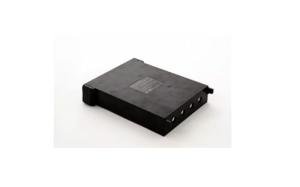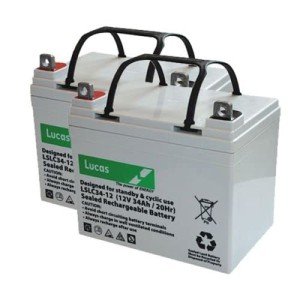As urban environments continue to evolve and everyday mobility needs expand, electric scooters and wheelchairs have emerged as vital tools for transportation. Central to the operation of these machines is the battery that powers them. Choosing the right battery can significantly affect the performance, efficiency, and lifespan of electric scooters and wheelchairs. This guide delves into the intricacies of batteries for electric scooters and wheelchairs, examining their types, maintenance, and troubleshooting while addressing frequently asked questions.
Types of Batteries
Electric scooters and wheelchairs typically utilize three main types of batteries: lead-acid batteries, lithium-ion batteries, and nickel-metal hydride (NiMH) batteries. Each type has its own set of characteristics that cater to different needs.
1. Lead-Acid Batteries
- Description: Lead-acid batteries are one of the oldest types of rechargeable batteries.
- Advantages:
- Inexpensive compared to other battery types.
- Reliable and widely available.
- Capable of delivering high currents, making them suitable for short bursts of power.
- Disadvantages:
- Heavier than other battery types, which can lead to increased scooter or wheelchair weight.
- Shorter lifespan (typically 1-3 years).
- Longer charging time and lower energy density.
2. Lithium-Ion Batteries
- Description: Lithium-ion batteries are the industry standard for most modern electric scooters and wheelchairs due to their superior performance characteristics.
- Advantages:
- Lightweight and compact, reducing the overall weight of the vehicle.
- High energy density, allowing for longer travel distances on a single charge.
- Faster charging times and longer lifespan (3-5 years).
- Disadvantages:
- Generally more expensive than lead-acid batteries.
- Require safe handling and proper charging practices to prevent overheating.
3. Nickel-Metal Hydride (NiMH) Batteries
- Description: NiMH batteries offer a middle ground between lead-acid and lithium-ion solutions.
- Advantages:
- Moderate cost and ease of availability.
- Less sensitive to temperature variations than lithium-ion batteries.
- Disadvantages:
- Heavier than lithium-ion batteries but lighter than lead-acid batteries.
- Shorter lifespan and lower energy density compared to lithium-ion.
Choosing the Right Battery
Selecting the appropriate battery for electric scooters and wheelchairs involves considering various factors:
- Weight: Lighter batteries improve mobility but may come at a higher cost.
- Range: Assess the distance typically traveled on a single charge. Lithium-ion batteries excel here.
- Power Requirements: Ensure the battery selected can deliver sufficient power (voltage and current) for the specific model.
- Budget: Understand that while lead-acid batteries are cheaper upfront, lithium-ion batteries provide better long-term value due to their lifespan and efficiency.
Battery Maintenance
Proper maintenance can elongate the lifespan of batteries in electric scooters and wheelchairs. Here are some maintenance tips to keep in mind:
Charging
- Use the Manufacturer’s Charger: Always use recommended chargers to avoid compatibility issues.
- Do Not Overcharge: Overcharging can lead to battery swelling and reduced lifespan.
- Charge Regularly: Try to keep batteries charged, rather than allowing them to deplete completely.
Storage
- Optimal Conditions: Store batteries in a cool, dry place, away from direct sunlight and extreme temperatures.
- Charge Before Storage: Ensure batteries are charged before long periods of inactivity.
Inspection
- Check for Corrosion: Look for any signs of corrosion or damage to terminals and connections.
- Monitor Performance: Regularly assess the range and charging duration to identify potential issues early.
Troubleshooting Common Issues
Electric scooters and wheelchairs can experience battery-related issues. Here are some common troubleshooting steps:
- Reduced Range: If a battery isn’t holding its charge, first check connections, then perform a full cycle of charging and discharging.
- Slow Charging: If charging takes significantly longer, the charger may be faulty. Try using a different compatible charger.
- Poor Performance: Performance issues could stem from old batteries that have reached the end of their lifespan. Consider replacing them.
FAQs about Batteries for Electric Scooters and Wheelchairs
Q1: How often should I replace the battery in my electric scooter or wheelchair?
A: Battery lifespan varies by type; lead-acid batteries typically last 1-3 years, while lithium-ion batteries can last 3-5 years. Regular maintenance and proper charging can influence this timeline.
Q2: Can I replace a lead-acid battery with a lithium-ion battery?
A: In many cases, yes, provided that the charger and electrical systems are compatible. Consult the manufacturer for recommendations.
Q3: How can I extend the life of my battery?
A: Regular charging, avoiding deep discharges, keeping the battery in optimal storage conditions, and following maintenance tips are key to extending battery lifespan.
Q4: What should I do if my battery overheats?
A: Disconnect it immediately and allow it to cool in a safe, dry place. If it continues to overheat, consult a professional or consider replacing it.
Q5: Do electric scooter and wheelchair batteries need special disposal?
A: Yes, batteries should be disposed of properly due to their potentially hazardous materials. Many cities have designated battery recycling programs.
The battery is indeed the heart of electric scooters and wheelchairs, and understanding its types, maintenance, and troubleshooting can make a significant difference in mobility experiences. As electric mobility solutions become more ubiquitous, staying informed about these essential components will empower users and enhance their journey toward sustainable and efficient transportation.






